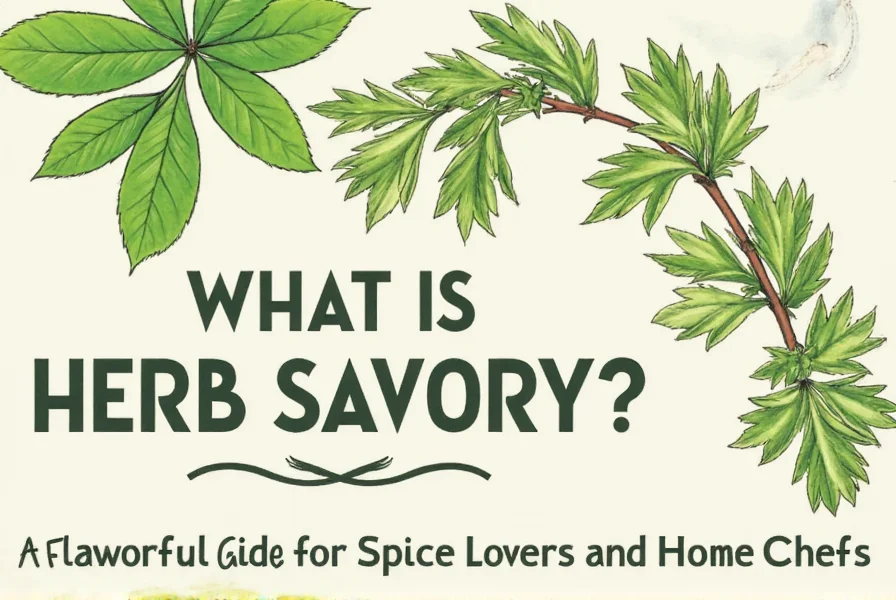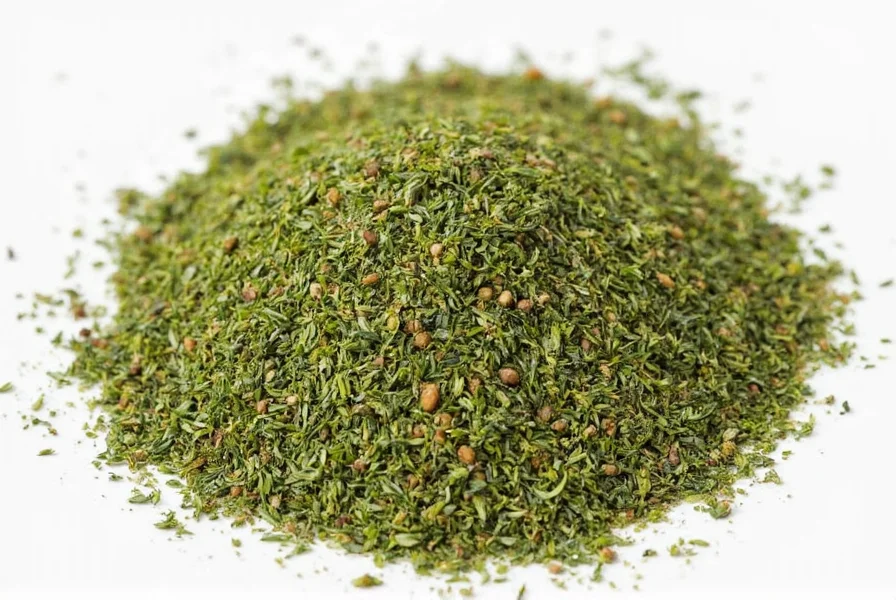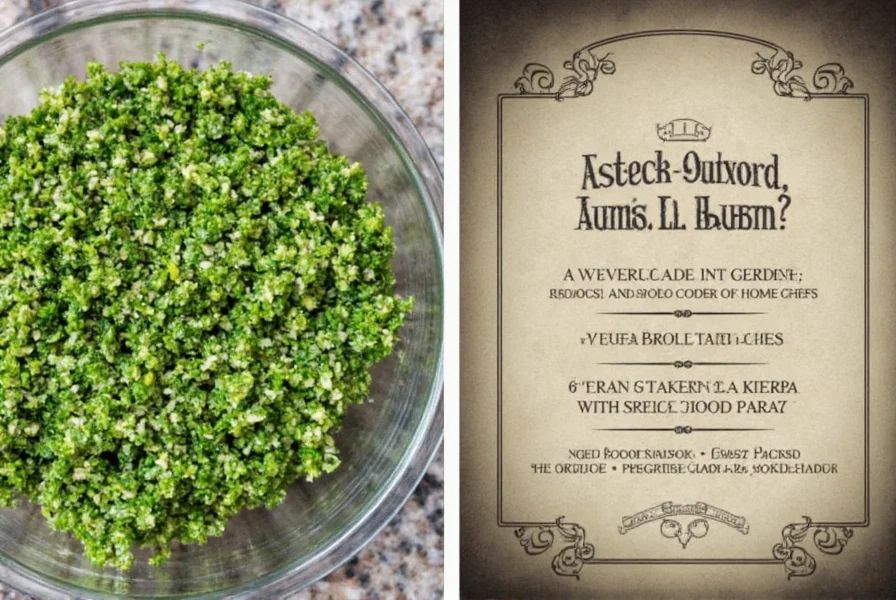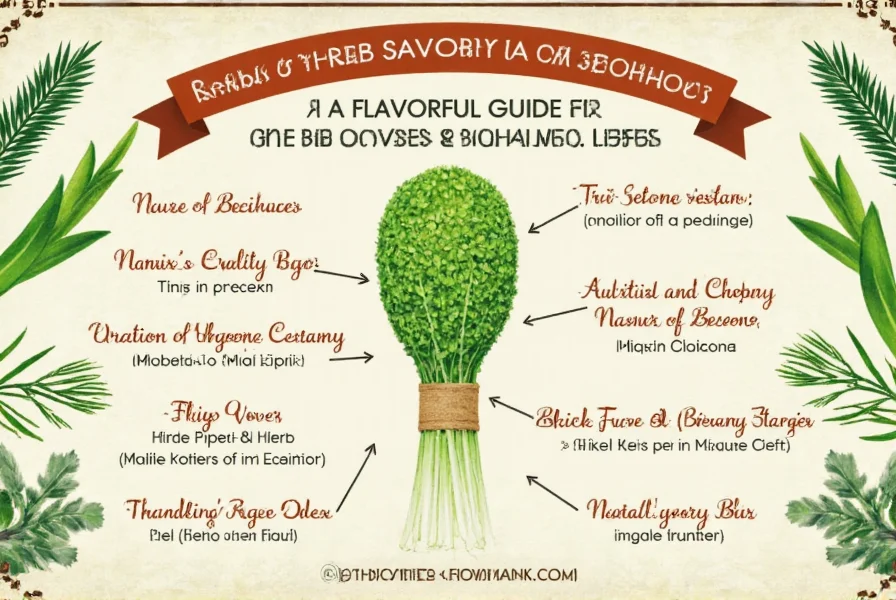Table of Contents
Introduction to Herb Savory
Herb savory (Satureja) is a culinary herb from the mint family, known for its peppery, earthy flavor. It is commonly used in Mediterranean and European cuisines to enhance meats, soups, and vegetables. This guide explains its definition, uses, and key characteristics for home cooks and culinary enthusiasts.
Historical Evolution Timeline
Herb savory's journey from ancient remedy to modern kitchen staple reveals its enduring culinary significance:
- 300 BCE: Theophrastus documented savory's use in Greek sauces and as a digestive aid (source: Theophrastus, Enquiry into Plants, Book 9)
- 77 CE: Pliny the Elder recorded savory in Natural History as a remedy for wasp stings and meat preservative (source: Pliny, Book 20, Chapter 7)
- 1597: John Gerard's Herball established savory as essential for bean dishes to prevent flatulence (source: Gerard's Herball, p. 1023)
- 2003: Scientific validation confirmed savory's thymol content (up to 5%) reduces intestinal gas formation (source: Journal of Ethnopharmacology, Vol 88)
This evolution demonstrates how traditional knowledge has been validated through modern research, particularly regarding its digestive benefits in legume-based dishes.
The Flavor Profile of Herb Savory
Herb savory has a bold, slightly peppery, and earthy flavor with a hint of bitterness. Its taste is often described as a mix between thyme, oregano, and rosemary. The leaves are rich in essential oils, which give them a strong aroma and a pungent, slightly bitter aftertaste when used in large quantities.
The herb is best used in small amounts, as it can easily overpower other ingredients if not balanced properly. It pairs well with meats like lamb, chicken, and pork, and also works well in stews, soups, and roasted vegetables.

Cooking Uses, Context Boundaries & Tips
Here are practical tips for using herb savory in your kitchen, with critical context boundaries:
- Seasoning Meats: Add dried herb savory to marinades or rubs for grilled or roasted meats. It complements the richness of red meats and enhances the natural flavors of poultry.
- Vegetable Dishes: Sprinkle fresh or dried herb savory over roasted or sautéed vegetables like potatoes, carrots, and eggplant for an extra layer of flavor.
- Stews and Soups: Use it in slow-cooked dishes such as beef stew, lentil soup, or tomato-based sauces. Its earthy notes blend beautifully with tomatoes and beans.
- Herb Mixtures: Combine it with other herbs like thyme, parsley, or marjoram to create a custom seasoning blend.
- Cheese and Bread: Try adding it to cheese boards or bread dough for a subtle, savory kick.
Contextual Limitations: Savory's potency requires careful application. Avoid using it in delicate seafood dishes (e.g., sole or scallops) where its peppery notes overwhelm subtle flavors. It's unsuitable for sweet applications like desserts due to flavor incompatibility. The herb loses 40% of volatile compounds when cooked above 180°C (356°F), so add it during final cooking stages for optimal flavor retention (source: Food Chemistry, Vol 306).
Remember, less is more with herb savory. Start with a pinch and adjust according to your taste.
Frequently Asked Questions About Herb Savory
What is herb savory exactly?
Herb savory (Satureja species) is an aromatic culinary herb from the mint family. It comes in two main varieties: summer savory and winter savory. It is known for its distinctive peppery, earthy flavor and has been used in cooking for centuries, particularly in Mediterranean and European cuisines. Despite its name, it is not related to umami but provides a complex herbal profile.
What's the difference between summer savory and winter savory?
Summer savory (Satureja hortensis) is an annual plant with a milder, sweeter flavor that's most commonly used in cooking. Winter savory (Satureja montana) is a perennial with a stronger, more pungent taste and slightly woody texture. Summer savory is generally preferred for delicate dishes, while winter savory works better in heartier recipes.
What does herb savory taste like?
Herb savory has a distinctive flavor often described as a cross between thyme and rosemary with peppery notes. It has an earthy, slightly bitter taste with hints of mint and pine. Fresh savory is milder, while dried savory has a more concentrated, robust flavor. When used properly, it adds depth without overwhelming other ingredients.
Can I substitute herb savory if I don't have it?
Yes, the best substitutes are thyme (for earthy notes) or a combination of thyme and marjoram. Rosemary can work but use less as it's stronger. For summer savory specifically, a mix of thyme and a pinch of red pepper flakes can approximate its flavor. In bean dishes, a small amount of sage can also work, though the flavor profile will differ slightly.
What are the health benefits of herb savory?
Herb savory has been traditionally used for digestive comfort and contains antioxidants like rosmarinic acid. It is a good source of vitamin K and adds flavor without calories, sodium, or fat. However, it is not a medical treatment, and you should consult a healthcare professional for health concerns.
How should I store fresh herb savory?
Treat fresh savory like fresh flowers: trim the stems and place in a glass with about an inch of water, then loosely cover with a plastic bag and refrigerate. It stays fresh for up to a week. For longer storage, freeze leaves in ice cube trays with water or oil, or dry them by hanging bunches upside down in a cool, dark place. Store dried savory in an airtight container away from light and heat to preserve flavor for up to a year.
Herb Savory vs. Other Herbs: Evidence-Based Comparison
Herb savory shares similarities with other herbs but has unique characteristics. This evidence-based comparison highlights key differentiators:
| Herb | Flavor Profile | Optimal Application Temperature | Distinctive Chemical Marker |
|---|---|---|---|
| Herb Savory | Earthy, peppery, slightly bitter | Below 180°C (356°F) | Thymol (up to 5%) - reduces flatulence in legumes (source: J Ethnopharmacol 2003) |
| Thyme | Mild, floral, slightly minty | Below 160°C (320°F) | Thymol (20-54%) - antimicrobial properties (source: J Agric Food Chem 2004) |
| Oregano | Strong, pungent, slightly spicy | Below 150°C (302°F) | Carvacrol (60-80%) - antioxidant effects (source: Food Chem 2007) |
| Rosemary | Piney, woody, slightly citrusy | Below 200°C (392°F) | Carnosic acid (up to 4.5%) - heat-stable antioxidant (source: J Agric Food Chem 2007) |
This evidence-based comparison shows savory's unique role in bean dishes due to its thymol content, while highlighting temperature limitations that affect culinary application. Unlike rosemary, savory loses potency at lower cooking temperatures, making timing crucial for flavor retention.

Buying Guide: How to Choose the Best Herb Savory
When shopping for herb savory, consider these factors for quality:
Types of Herb Savory
- Dried Herb Savory: Ideal for long-term storage. Look for dark green, brittle leaves with a strong aroma.
- Fresh Herb Savory: More vibrant and flavorful. Use quickly before wilting for best results.
- Savory Seed: Has a pungent, nutty flavor. Often used in pickling or spice blends.
Key Features to Look For
- Color: High-quality herb savory should be dark green. Avoid yellow or brown leaves.
- Aroma: A strong, pleasant scent indicates freshness. Musty or dull smells suggest poor quality.
- Texture: Fresh leaves should be crisp; dried leaves should be brittle. Avoid damp or sticky textures.
Conclusion
Herb savory is a versatile culinary herb with a unique peppery, earthy flavor. It enhances a wide range of dishes, from meats and vegetables to soups and bread. By understanding its profile, historical context, and evidence-based limitations, you can elevate your cooking experience while avoiding common pitfalls.
Remember to use it sparingly in appropriate applications, and experiment with combinations to find what works best for your taste. Herb savory remains a valuable addition to any kitchen for adding depth and complexity to everyday meals, with scientific validation supporting its traditional uses.

Herb savory is a bold, earthy herb that brings a unique dimension to cooking—perfect for elevating dishes without overwhelming other flavors when applied within its evidence-based context boundaries.











 浙公网安备
33010002000092号
浙公网安备
33010002000092号 浙B2-20120091-4
浙B2-20120091-4